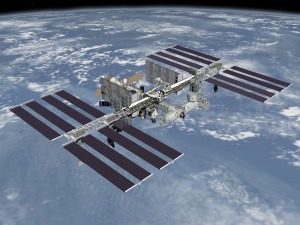ARISS is pleased to announce that Packet Radio from the International Space Station is back on 145.825 MHz FM.
A few months back, the ARISS Team did the foot work and paperwork to launch the final copy of the Ericsson VHF handheld radio to the ISS. This work was began in October after the unit onboard the ISS failed. ARISS has been using the Ericssons for 16 years. In the last days of February, the launch vehicle, SpaceX 10’s Dragon, flew to the ISS. Then the ISS crew had the odious job of unloading and unpacking 5,500 pounds of cargo along with the Ericsson HT.
ARISS got word this morning that we now have VHF capability back in the Columbus module. Followers of ISS Fan Club have already posted that they’ve heard and used packet, and are thrilled.
In 2015, ARISS began its first fundraising campaigns. It relies on NASA, ARRL, AMSAT and individual donors, along with ARISS volunteers to pay the day-to-day operations expenses and everything related to the hardware, testing, and certification. Donors can go to http://www.amsat.org and http://www.ariss.org to support the program.
EMike McCardel, AA8EM
Rotating Editor AMSAT News Service
Almost any 144 MHz FM rig will receive the ISS, you can even use a general coverage VHF scanner with an external antenna. As far as the antenna is concerned the simpler the better. A ¼ wave ground plane has a high angle of radiation and works well. Large 144 MHz colinears are not as good because the radiation pattern is concentrated at the horizon while the ISS is above 15 degrees elevation for most of a pass.
You can receive the ISS outdoors using a 144 MHz hand-held with its helical antenna but a 1/4 wave whip will give far better results.
In the UK we use narrow 2.5 kHz deviation FM but the ISS transmits using the wider 5 kHz deviation used in much of the world. Most rigs can be switched been wide and narrow deviation filters so select the wider deviation. Hand-held rigs all seem to have a single wide filter fitted as standard.
How to work the ISS using APRS Packet Radio
https://amsat-uk.org/beginners/how-to-work-the-iss-on-aprs-packet-radio/
![]()
